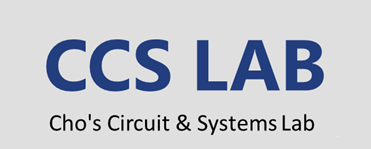
The Voltage-to-Time Converter (VTC) is a high-speed, low-power, and variation-tolerant IP which generates a time-domain output pulse PVTC proportional to the voltage difference between two analog voltage inputs VIN and VREF (Figure 1). The VTC generates a timing pulse based on the delay caused by charging a capacitor from VIN until it reaches an inverter’s threshold. By subtracting a pulse proportional to VREF from this timing pulse, a final output pulse PVTC proportional to VIN – VREF is obtained.
The IP includes a power-saving mode enabled via specific clock phase state, significantly reducing power consumption when inactive. Fabricated in a 28 nm CMOS process and occupying only 28 μm² of core area, the VTC is ideal for integration into power-sensitive and space-constrained mixed-signal systems. Designed for robustness across varying environmental conditions, the VTC offers excellent tolerance to supply voltage and temperature fluctuations, with output pulse variation maintained within tens of picoseconds across the full operating range. It supports high-frequency operation exceeding 10 MHz, making it suitable for fast, event-driven applications.
Feature
· • Voltage-to-Time Conversion
·
• Inherent ReLU Activation
·
• Fast Operating Speed: >10 MHz
·
• Low Power Consumption: 0.803 µW
·
- Power saving mode by disabling input clocks: 99.8% power saving
·
• IP Size: 28μm^2 Core Area
·
• Supply Voltage: 0.9 V to 1.1 V
·
- Output pulse width T_VTC variation: 0.069 ns for ±10% Supply voltage variation
·
• Operating Temperature: -20°C to 85°C
·
- Output pulse width T_VTC variation: 0.035 ns from -20°C to 85°C
Application
· • Energy-Efficient Analog Computing based CNN Processors
Business Area
Automotive Radar or LiDAR system, Memory system
Category
Analog & Mixed Signal > Other
Deliverables
· Schematic netlist & testbench
Validation Status
· Simulation-proven
Availability
Samsung 28nm Only